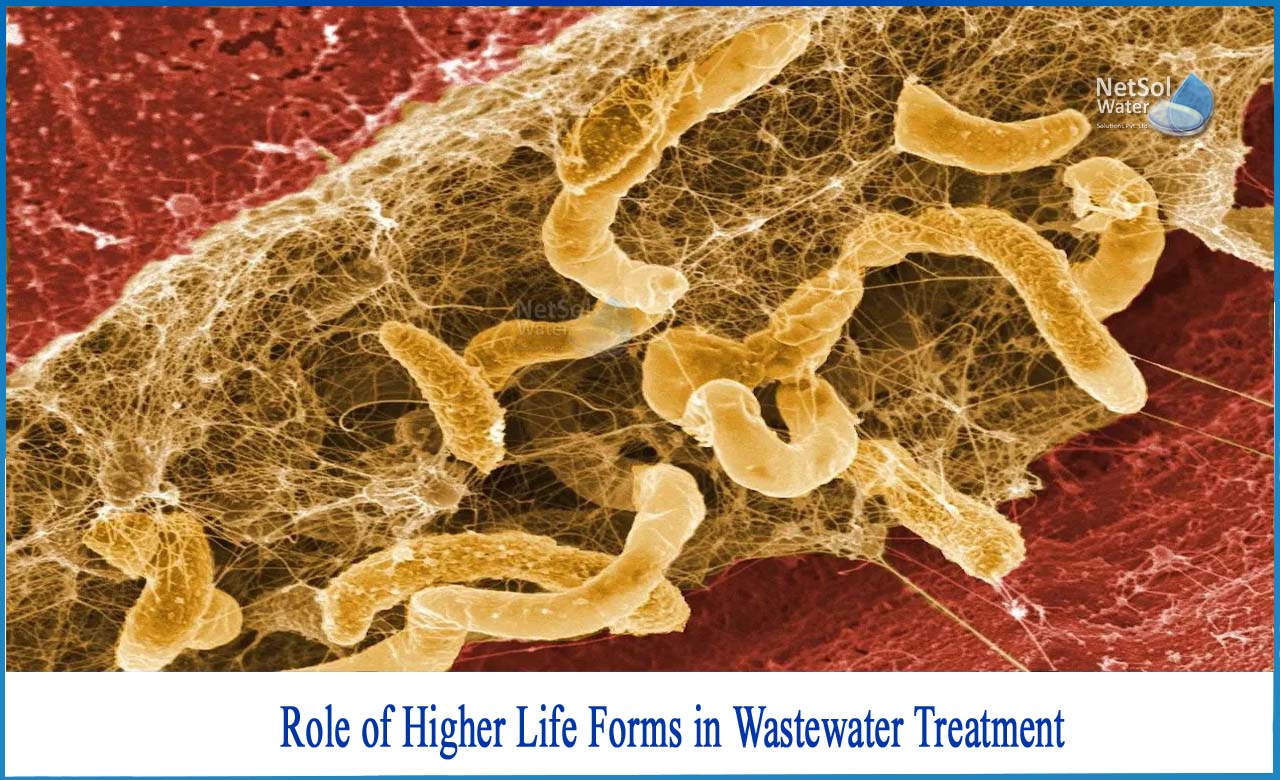What is the Role of Higher Life Forms in WWTP?
Over the last few decade, there has been a significant growth in public knowledge of microorganisms. Little is known, however, about their distant cousins, the 'Protozoans and Metazoans,' also known as 'higher life forms.' Both of these types of organisms are quite useful in the treatment of industrial wastewater.
In an ideal activated sludge, microorganisms make up 95% of the population, with higher life forms accounting for 4% of the microbial population. Although these higher living forms contribute very little to the extraction of dissolved nutrients, their presence improves water clarity and serves as an indicator of effluent condition.
Single-celled microorganisms known as protozoa exist in a wide range of sizes and forms. Their major job in the treatment process is to get rid of non-flocculent bacteria and tiny floc that don't settle. Metazoa are multicellular bacteria, algae, and protozoa-eating microbes.
Parameters for the survival of higher life forms
1: Temperature- In the temperature range where activated sludge activities take place, higher living forms can survive and reproduce.
2: ph- pH is more sensitive to higher living forms than bacteria.
3: Dissolved oxygen- Higher life forms, including bacteria, require dissolved oxygen to survive.
4: Nutrition-Unless harmful, most municipal wastewater treatment plants and effluent treatment plants have enough nutrients to support the majority of higher living forms found in wastewater.
Effluent conditions of higher life forms
The ability of higher living forms to convey information about effluent conditions and sludge age is one of their most valuable characteristics. The following are higher life forms that indicate steady effluent conditions and healthy activated sludge:
A: Amoebae- Amoebae can only reproduce if the nutrient content in the aeration basin is high or if there is little competition for the food. As a result, they have a stronghold early in the wastewater treatment process.
What does Amoeba's existence indicate?
-An unexpected rise in influent BOD. This would increase the amount of food accessible to them, allowing them to compete.
-A considerable amount of particulate particles is present. Particulates are preferred by amoeba.
-Oxygen deficiency Amoebae are slow-moving protozoa that require less oxygen than other protozoa.
B: Flagellates- Since most flagellates absorb nutrients in the same way that bacteria do, they compete for dissolved nutrients with bacteria. While the quantity of soluble nutrients is high and the number of bacteria is still low, the number of flagellates peaks. While there are still substantial concentrations of soluble food, amoebae begin to vanish shortly after.
What do flagellates mean when they're present?
-There are still a lot of soluble organic nutrients in the effluent.
-It could also be an indication of an unsettled stomach. High hydraulic loads, increasing organic loadings, and issues with dissolved oxygen concentrations are all common triggers.
C: Ciliates
>Free-swimming ciliates: They have hair-like projections on their bodies that they utilise for locomotion and to sweep food into their mouths, but they contribute very little to the removal of organic material from wastewater. They don't eat dissolved organics; instead, they eat bacteria.
Indication- The presence of free-swimming ciliates usually indicates that the patient is responding well to treatment. They take over following the creation of floc and the removal of the majority of the organic nutrients. After the flagellates had started to fade, these appear.
>Crawling ciliates: They have cilia on both sides of their bodies. Cilia are twisted together to form "tufts," or legs, which are used to crawl across the floc.
Indication- Because crawling ciliates, unlike free-swimming ciliates, may obtain food within the floc, their presence indicates a lower population of dispersed bacteria and more flocs.
>Stalked ciliates: Only the cilia surrounding the oral groove or mouth of stalked ciliates are employed to create a current that brings food into the mouth.
Indication- Sludge ageing is indicated by the presence of colonial stalked ciliates. The colony stalked ciliates begin to outcompete the single stalked ciliates for dominance as the sludge matures and less food becomes available.
D: Rotifers- Rotifers are metazoans that are widely found in waste water and play an important role in the treatment of activated sludge. They eat bacteria and suspended debris. They do a fantastic job polishing and eliminating any remaining debris in the water. They also release a sticky material that keeps the floc clumped together and tight. Rotifers have been demonstrated to assist in the reduction of bulking in wastewater systems by preying on the filamentous bacteria "Microthrix." Rotifers are used by certain wastewater treatment plants to determine whether they need to enhance sludge wasting.
Netsol Water is Greater Noida-based leading water & wastewater treatment plant manufacturer. We are industry's most demanding company based on client review and work quality. We are known as best commercial RO plant manufacturers, industrial RO plant manufacturer, sewage treatment plant manufacturer, Water Softener Plant Manufacturers and effluent treatment plant manufacturers. Apart from this 24x7 customer support is our USP. Call on +91-9650608473, or write us at enquiry@netsolwater.com for any support, inquiry or product-purchase related query.



